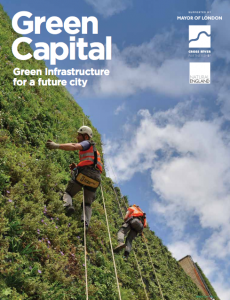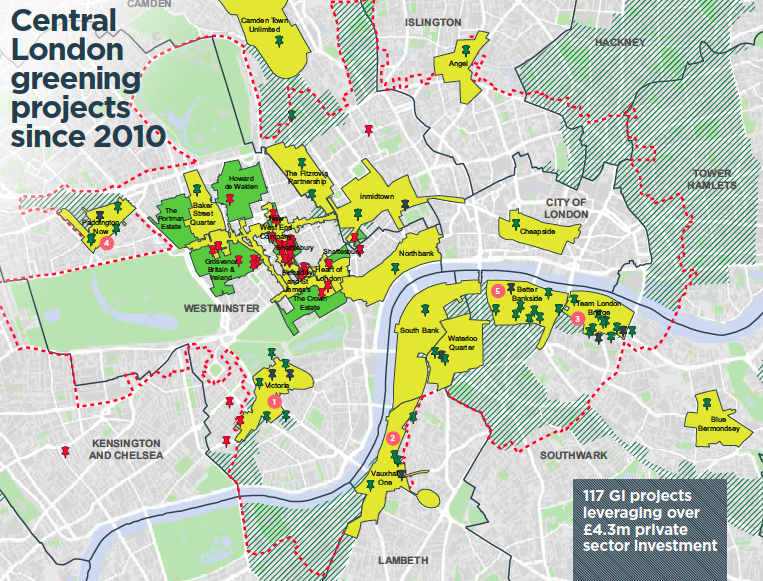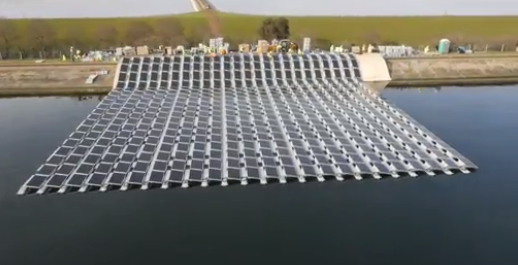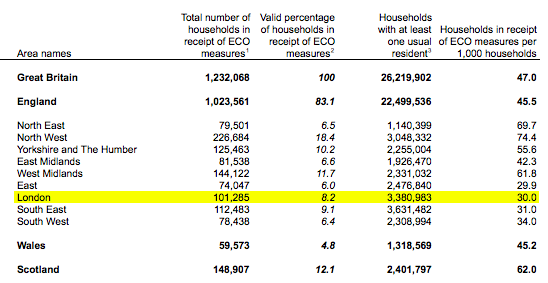Site search:
-
What’s new?
Energy for London Tags
Brent Buildings Camden Carbon Emissions CHP Cities Climate Adaptation Community Heating Community Initiatives Croydon Data DECC Decentralised Energy Distribution ECO Energy Costs Energy Efficiency Enfield FIT Fuel Poverty Funding Green Deal Hackney Haringey Housing Islington Lambeth Library Local Authorities Mayor Newham Ofgem Olympics Photovoltaics Planning RE:FIT RE:NEW Renewable Energy Retrofit Southwark Tower Hamlets Transport Waltham Forest Waste WestminsterEnergy Archives:
- February 2021 (1)
- January 2021 (15)
- December 2020 (15)
- November 2020 (9)
- October 2020 (3)
- August 2020 (5)
- July 2020 (3)
- June 2020 (4)
- April 2020 (10)
- March 2020 (5)
- February 2020 (2)
- January 2020 (3)
- October 2019 (1)
- September 2019 (4)
- August 2019 (2)
- July 2019 (1)
- August 2018 (1)
- November 2016 (8)
- October 2016 (8)
- September 2016 (2)
- August 2016 (8)
- July 2016 (14)
- April 2016 (12)
- March 2016 (16)
- February 2016 (8)
- January 2016 (4)
- December 2015 (1)
- November 2015 (1)
- October 2015 (16)
- September 2015 (3)
- June 2015 (1)
- May 2015 (1)
- April 2015 (1)
- March 2015 (1)
- February 2015 (1)
- January 2015 (1)
- December 2014 (18)
- November 2014 (4)
- August 2014 (8)
- July 2014 (7)
- June 2014 (25)
- May 2014 (8)
- April 2014 (4)
- March 2014 (12)
- February 2014 (7)
- January 2014 (13)
- December 2013 (11)
- November 2013 (15)
- October 2013 (15)
- September 2013 (18)
- August 2013 (5)
- July 2013 (20)
- June 2013 (33)
- May 2013 (8)
- April 2013 (16)
- March 2013 (25)
- February 2013 (14)
- January 2013 (20)
- December 2012 (23)
- November 2012 (23)
- October 2012 (25)
- September 2012 (14)
- July 2012 (12)
- June 2012 (43)
- May 2012 (20)
- April 2012 (8)
- March 2012 (40)
- February 2012 (39)
- January 2012 (40)
- December 2011 (22)
- November 2011 (40)
- October 2011 (33)
- September 2011 (48)
- August 2011 (40)
- July 2011 (58)
- June 2011 (41)
- May 2011 (80)
- April 2011 (38)
- March 2011 (33)
- February 2011 (25)
- January 2011 (24)
- December 2010 (3)
- November 2010 (7)
- October 2010 (6)
- September 2010 (7)
- August 2010 (1)
- July 2010 (2)
- June 2010 (4)
- May 2010 (1)
- March 2010 (3)
- February 2010 (3)
- December 2009 (5)
- November 2009 (2)
- October 2009 (3)
- July 2009 (3)
- June 2009 (1)
- April 2009 (1)
- March 2009 (1)
- February 2009 (1)
- January 2009 (1)
- December 2008 (2)
- October 2008 (1)
- September 2008 (1)
- July 2008 (1)
- March 2008 (2)
- January 2008 (2)
- October 2007 (1)
- September 2007 (3)
- July 2007 (1)
- March 2007 (1)
- February 2007 (3)
- November 2006 (3)
- August 2006 (1)
- February 2006 (1)
- May 2005 (1)
- February 2004 (1)
Monthly Archives: March 2016
London Greens announce ‘red lines’ for Mayoral 2nd preference endorsement
March 2016: London Green Party members have thrown down the gauntlet to Zac Goldsmith and Sadiq Khan, as they lay out their four ‘red line’ policies either candidate must back before Greens officially give them their 2nd preference support for May 5th. Read the full report at the BrightGreen website here.
DSR project in Hillingdon
March 2016: EDIE reports that “Building materials supplier Hanson UK is pioneering a demand-side response approach to energy management, with the technology being rolled out to 29 of the company’s quarries across the country” including Hanson’s West Drayton Asphalt Plant in the London Borough of Hillingdon.
“The London-based firm, which employs around 3,500 people, has partnered with demand-response aggregator Open Energi to install the ‘Dynamic Demand’ system at 14 of its sites, with another 15 installations planned through a phased rollout.
“Using the demand side response technology, tanks and pumps used to dewater Hanson’s quarries will be able to reduce their energy consumption when UK energy demand exceeds supply, and increase consumption when supply exceeds demand.”
Further information can be read on Open Energi’s website.
Power Up North London!
Community Energy group Power Up North London have just posted an update on their work. Further information can be seen on their website.
Green Capital
March 2016:  “London’s businesses can play an important role in greening the city, making it a more attractive and healthy place. To help businesses to green the city, we’ve supported 15 ‘green infrastructure audits’. These identify where greening projects, like green roofs, green walls, and planters, could be put in place. We are also supporting businesses to install these greening projects”
“London’s businesses can play an important role in greening the city, making it a more attractive and healthy place. To help businesses to green the city, we’ve supported 15 ‘green infrastructure audits’. These identify where greening projects, like green roofs, green walls, and planters, could be put in place. We are also supporting businesses to install these greening projects”
Read the GLA case study guide, Green Capital, here and watch the video here.
The Mayor’s Green Infrastructure Task Force report, published in December 2015, can be read here. Further information on Greening London can be seen here on the GLA website alongside London’s Green Roof Map.
Smart City Opportunities for London
March 2016: A new Arup study ‘Smart City Opportunities for London‘ has just been published by the GLA. This report was commissioned to investigate how “London can make the most of the benefits of digital technology by assessing London’s strengths as a smart city and identifying the opportunities for stakeholders in the smart city market.” 
The findings of this report will support the update of the Smart London Plan, the capital’s smart city strategy. It looks at five key industries in detail – energy, water, waste, transport and health. On Smart energy the report states that “London faces energy challenges, including security of supply, ageing infrastructure, fuel poverty, and failure to align retail energy prices with wholesale costs.International and national policies prescribe switching to renewable sources of energy as a way to reduce the use of fossil fuels as well as address climate change and the depletion of resources. The deployment of smart solutions has started to address energy challenges in London, such as trialling smart grid solutions (UK Power Networks) and installing smart meters in homes. There are plenty of opportunities for companies to develop and implement more solutions in renewable energy, smart grid and electric transport. We estimate that the market for smart energy solutions in London could grow to $2.1bn by 2020.”
Why London’s next mayor should set up a municipal energy supply company
March 2016: An article on Citymetric by Jenny Jones of the London Assembly Green Party providing a useful summary of a report commissioned by her, and published in December 2015, looking at the opportunity for a new Mayor to set up a London municipal energy supply company.
Jenny Jones states that “my proposal would go beyond License Lite and instead establish a fully licensed not-for-profit energy supply business. This would manage TfL’s significant and growing electricity requirements, and extend supply services to London’s homes and businesses.”
This proposal was adopted this February by Green Party candidate for the London Mayoral 2016 election, Sian Berry, who has set out in a briefing note what a new London Energy Company would prioritise.
Posted in Decentralised Energy, News, Renewable Energy, Uncategorized
Tagged licence lite, Mayor2016, Photovoltaics
Leave a comment
How London’s giant floating solar farm was put together
23 March 2016: A new BBC London TV news story providing some added background to Europe’s biggest floating solar farm which is being built in south west London.
The project:
- Took three months to build
- Is installed at the Queen Elizabeth Reservoir at Walton on Thames, just outside of Kingston, and is the size of eight football pitches
- Consists of 23,000 solar panels attached to floats allowing the panels to sit on the water
- Will contribute to Thames Water target to generate 33% of its energy demand from renewable energy by 2020
- Has had to be installed quickly to meet the 31 March 2016 deadline for large solar projects under the Government’s Renewable Obligation policy.
Posted in Decentralised Energy, News, Renewable Energy
Tagged Decentralised Energy, Kingston, Photovoltaics, Renewable Energy
Leave a comment
Adaptation responses to climate change differ between global megacities
March 2016: “The major cities in the Global North are protecting themselves against the risks of climate change, while cities in developing countries continue to suffer from massive under-investment. A study on ten cities, led by Lucien Georgeson of University College London, found that financing for climate change adaptation had increased across the board by 3% to 4% per year in recent years.” Read the full article Euroactiv article
“Without significant action against climate change, much of central London may be under water by 2050.”
Boris confronted on “1,620,000 loft/cavity retrofit target shortfall”
March 2016: …and so after eight years, we come to Boris’s last question time as London Mayor! And it’s good to see that energy and climate issues featured significantly yet again – a full list of which are posted here. In addition, a video has been posted online by London Assembly Green Party member Jenny Jones of her questions to the Mayor about a shortfall in his domestic energy efficiency programme RE:NEW.
And on that shortfall – Jenny Jones states that 95 per cent off the Mayor’s 1.7m home retrofit target has been missed with only 80,000 cavity and loft installations achieved out of a target set by the Mayor of 1.7 million. In response, the Mayor states:
- CO2 has reduced 14% since the programme began – in spite of London economic growth of 20%;
- London has significant challenges on insulation due to the low incidence of cavity wall homes and conservation areas;
- The Green Deal “wasn’t working well”
- To compensate he has recently introduced a London boiler scrappage scheme;
- After being called a “minnow” on London climate change action by Jenny Jones, when compared to other city leaders such as former New York Mayor Bloomberg and former California Governor Arnold Schwarzenegger, the Mayor responded that ‘he hasn’t been swanning off around the world on climate change junkets … to give good green sermons”
The Mayor’s 2011 Climate Change Mitigation and Energy Strategy actually states a 2015 target of retrofitting 1.2 million homes. And the June 2015 update to the Strategy sets out that “By the end of the 2013-14 financial year, over 100,000 homes were visited through the Mayor’s retrofit programmes. Coupled with wider market delivery, 500,000 home have been retrofitted across the capital”, this wider market delivery referring to the number of homes delivered through the Government’s ECO programme.
The disastrous cuts to ECO and failure of the Green Deal have dramatically reduced the effectiveness of the Mayor’s energy efficiency programme RE:NEW, a recent MQ stating that in “the 12 months from October 2014 RE:NEW supported the retrofit of over 4,500 homes.”
A lot depends on what is meant by retrofit: the initial phases of the RE:NEW programme visited homes on a specifically identified area basis, providing households with a number of free “easy measures”. These visits where meant to unlock additional, more significant, retrofit action in the visited households, such as the installation of loft, cavity or solid wall insulation. Follow up action by households was however fairly limited (only a few per cent) – as has been set out in the following research paper.
It’s clear from a recent MQ that the RE:NEW programme has been adversely impacted by the Government’s disastrous changes to its ECO programme, and the flawed nature of the Green Deal. The latest Government data shows that, despite the RE:NEW programme being in place to stimulate the uptake of energy efficiency in the capital, London still has the second lowest number of ECO measures installed (per 1,000 households) across UK regions.
Provisional number of households in receipt of ECO measures by region, up to 30th June 2015 (DECC spreadsheet)
Posted in Energy Efficiency, News, Uncategorized
Tagged Energy, insulation, RE:NEW, Solid Wall Insulation
Leave a comment
Energy and Climate Questions to the Mayor
March 2016: This month Mayor’s Question Time – the last in Boris Johnson’s eight year tenure as Mayor – once again included a wide range of questions on energy and climate, which included:
capturing waste heat from London Crossrail stations; the Mayor’s record on climate change; London based generators and Licenced Lite; the ability for Londoners connected to a district heating scheme to complain about poor service performance; anticipated prices of district energy heat tariffs; announcing the start of the Licence Lite programme; improvements in electricity export sales price for generators through Licence Lite; the number of Excess Winter Deaths amongst Londoners; challenges in promoting gasification technologies at the Olympic Park; the GLA’s Environment Team budget over the last 8 years; targets associated with the Boiler Scrappage Scheme; publication of London district energy schemes heat tariffs; the publication of London Energy Plan studies; guaranteeing that there are no plans for an incineration plan at Old Oak Common; the Mayor’s Boiler Scrappage scheme and fraud; RE:NEW energy efficiency retrofit programme delivery problems; how government energy efficiency programmes have helped Londoners; the amount of London’s (non transport) energy is supplied through local decentralised energy systems; cuts to the Energy Company Obligation (ECO); the Mayor’s recent meeting with the Secretary of State for Energy; the absence of London Fuel Poverty Strategy; the roll out of smart meters in London
Sutton district heating scheme; embodied carbon; annual progress on decentralised energy growth in London; anticipated savings from the new GLA boiler ‘cashback’ scheme; visits by the Mayor to RE:NEW energy efficiency retrofit projects; TfL future energy costs and the Mayor’s meeting with the National Infrastructure Commission.
Previous months questions to the Mayor can be found here.
Posted in Decentralised Energy, Energy Efficiency, News, Renewable Energy, Uncategorized
Tagged Community Heating, ECO, Fuel Poverty, licence lite, RE:NEW, Sutton, Transport, Waste
Leave a comment
TfL & Low Carbon Generation
March 2016: The Mayor has as yet not formally announced the start of his Licence Lite initiative (something that was originally set to be in place in August 2015), the aim of which was to supply low carbon electricity to TfL (see previous posts here). The Mayor has entered into an agreement with Npower who will provide technical support to the GLA in relation to fulfilling their electricity supply ‘Licence Lite’ conditions. Though there have been delays in getting the programme off the ground, TfL’s new Business Plan whilst not mentioning the Licence Lite programme at all, states that their timetable is to source this electricity this year: “In 2016, we plan to complete a deal to connect directly to 30 megawatts of locally-sourced, low-carbon electricity.” 30MW is three times higher than was suggested by the Mayor back in November 2015.
Though TfL’s electricity consumption is growing as added train services, train stations, and whole new lines like Crossrail come online, the business plan says remarkably little about its plan for securing energy supplies.
A great deal more information on TfL’s future requirement for electricity is set out in a recent report commissioned by GLA Assembly Member Jenny Jones, on proposals around the creation of a London Energy Company.
London’s floating solar array – video
17 March 2016: There has rightly been a lot of press around an innovative floating PV array which is currently being constructed in the west of London near Heathrow. The project has been covered in The Guardian, BBC, and a helpful video visiting the site has just recently been posted online by EnergyLiveNews.
Details of the solar array follow below:
- The project is being funded and developed by Lightsource and Ennoviga for Thames Water (see their press release here) at their Queen Elizabeth II reservoir, near Walton-on-Thames, in Surrey.
- The array will consist of 23,000 solar panels with a total generating capacity of 6.3MW
- The electricity will be used to part power Thames Water’s nearby water treatment works
- It’s not the first floating solar farm in the UK – that’s a United Utilities project in Manchester – but it is the biggest such scheme in Europe.
- Treehugger usefully mentions that “…the water keeps the solar panels cool, which helps the solar panels to perform better and last longer and the water itself benefits from the panels being there. In the case of reservoirs, the panels block out sunlight so it keeps algae growth to a minimum and reduces water evaporation to keep the reservoirs full.”
This project goes to highlight the hugely flexible nature of solar and the huge potential for PV that could exist across the capital across many sites when properly supported.






